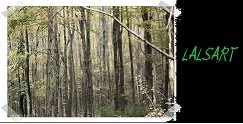
There are so many ways to approach oil painting. Oil paints are the longest drying medium compared too water-colors, or acrylic. Make sure you have the correct brushes, work only from containers that do not dissolve with Turpin solutions. I recommend selecting a painting medium that will dry your oil paints faster and intensify the oil colors, use linseed oil which will allow your paints the right consistency plus a varnish for intensifying the value of colors.
The rule is part of painting medium, one part linseed oil, one part varnish.
Turpentine always thins out the paints. Depending on the thickness of your paints depends on how much turpentine you require.
When attending art school the painting instructors were as different as day and night. There is no correct way to approach oil painting understand this may not be much assistance to you when you are starting. However, painting is trial and error. The more you paint the more you learn to understand how the paint can or can not be controlled. Oil paints are the slowest drying medium compared too water-colors, or acrylic. Because of this you will need a painting medium. They range in prices. If you are beginner then you may prefer the brand name Gumbacher. If you are a more advanced painter then you may like Windsor Newton Brand. There can be a huge difference in cost. The more you pay the better quality you will have in the product.
The second medium you need is a Varnish. Oil paints dry dull. The varnish will intensify the value and give you the ability to overlap the colors.
The third item suggested is linseed oil. Linseed oil will allow your paints to give you a smother constancy.
You will need turpentine. Turpentine requires a well ventilated room and will give a strong and distinct odor. Usually I use turpinoid. Turpinoid is less pungent in odor. However, the cost is slightly higher. There are other solvents that can substitute oil paints but your best choice will be in turpinoid.
Be prepared to have several containers to wash you brushes. I keep one with clean turpentine, one to use for light to white colors, and one to use for mixing darker colors. You want to poor at least a 5 fluid ounces turpentine into each can. You need to use containers that will not be eaten away from the turpentine.
Brushes come in an assortment of sizes and shapes. The smaller the number the smaller the brush. The detailed brushes numbers go as low as triple zero. While the larger brushes can even be the size of your house paints. The more brushes you have the more possibilities of textures you can create. It can be overwhelming. Look for brushes that state good to use for Oil Painting. Because of the turpentine you will find your paint brushes will need to be frequently replaced. Many of the Art store carry paint brushes in sets. If it is your first time painting it is highly recommended you purchase a beginners set.
Disposable pallets are easy for clean up.
Wear old clothes, consider a smock top, and be prepared to slop up your space.
Accessories like pallet knifes, tooth brush, foam or sponge brush will allow for different textures.
Accessories like pallet knifes, tooth brush, foam or sponge brush will allow for different textures.
Look for the notes on selecting your canvas......... Get ready it is almost time to have fun and start your first oil painting.
HAVE FUN........

